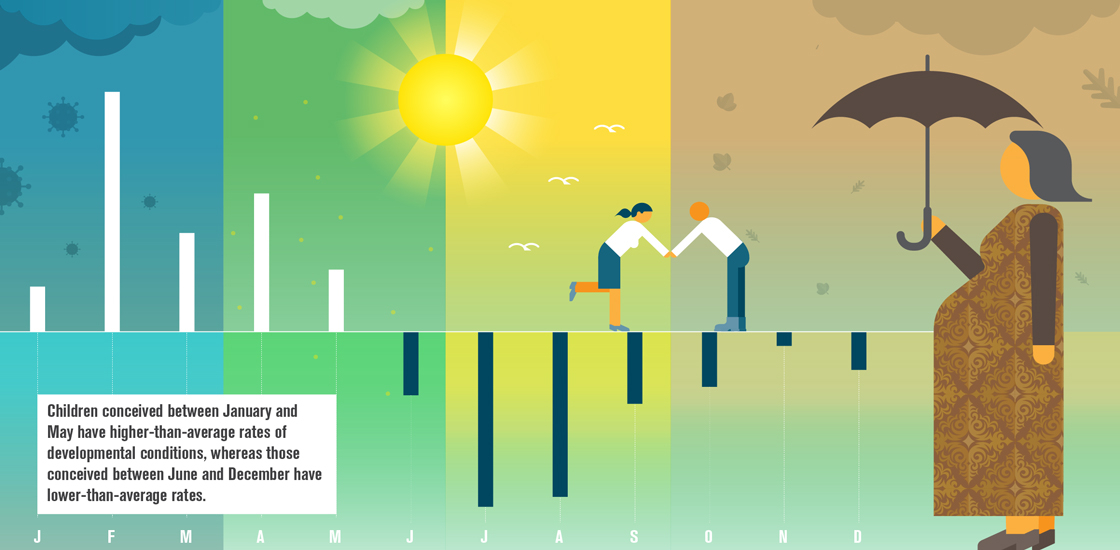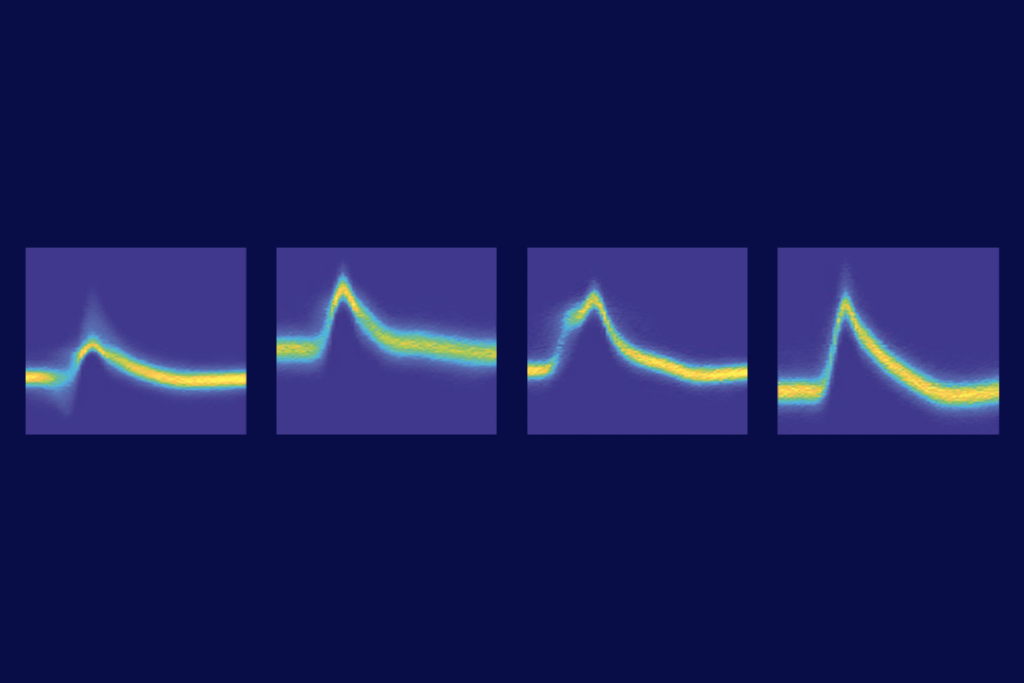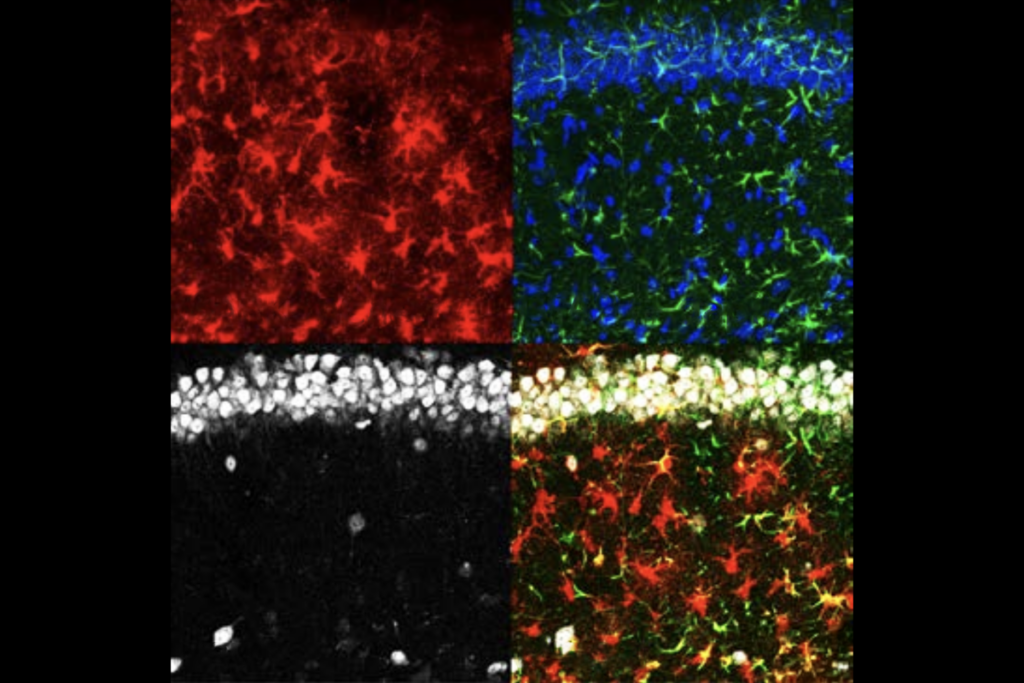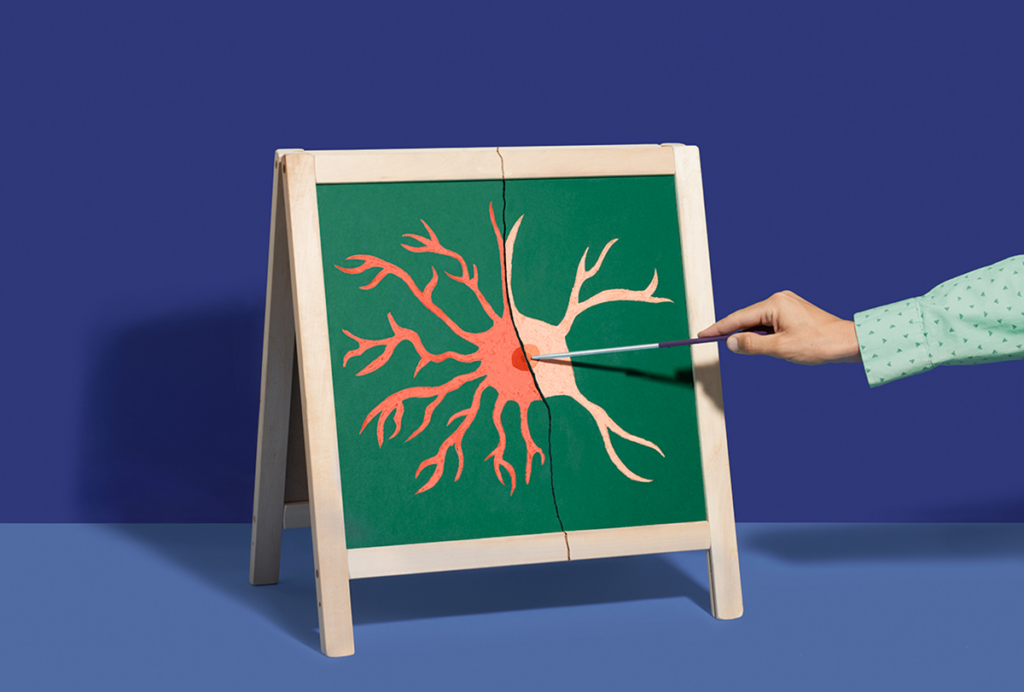Autism rates highest among babies conceived in winter
Exposure to influenza and a lack of sunlight may drive the increased risk of autism.

Children conceived during winter months are more likely to have autism and other developmental conditions than those conceived in summer, according to a study of 800,000 school-age children in Scotland1.
The study, published in the September issue of the American Journal of Epidemiology, suggests that the season of conception accounts for 11.4 percent of cases of autism, intellectual disability and learning difficulties, such as dyslexia.
Exposure to influenza and the dearth of sunlight — which provides vitamin D — during winter pregnancies may drive the increased risk, says lead researcher Jill Pell, director of the University of Glasgow’s Institute of Health and Wellbeing.
Small studies have linked autism risk among children to season of birth or conception. A 2010 study of 86 British children with autism found that 15 children were conceived in July compared with just 5 conceived in October2.
Pell and her team set out to confirm these findings in a much larger group that includes nearly 8,000 children with autism. The researchers also wanted to see whether the season of conception factors into the rates of other developmental conditions.
The team mined two Scottish registries — one containing maternity records and another containing school census data. They linked each child’s month of conception to any special education needs stemming from a diagnosis of autism, intellectual disability, learning difficulties, communication problems, vision or hearing impairments or motor delays.
Overall, 8.9 percent of children conceived in the winter months — between January and March — have autism, intellectual disability or learning difficulties, compared with 7.6 percent of children conceived between July and September. The seasonal uptick may seem modest, but it accounts for almost 8,000 children with developmental conditions, the researchers say.
“If you apply that [difference] across 800,000 children, that’s a lot of cases,” Pell says.
Winter blues:
The rate of intellectual disability is highest among children conceived in February and lowest among those conceived in August, the researchers found. The rate of learning difficulties, such as dyslexia, is likewise highest among children conceived in February and lowest among those conceived in July.
When the researchers looked at the seasonal pattern of autism cases, they observed a shift toward April, which is typically warmer than the first three months of the year in Scotland. Similar to intellectual disability and learning difficulties, autism rates were lowest among children conceived in August.
The absolute risk of autism remains small, however. Roughly 1 percent of babies conceived during cold months have autism compared with 0.9 percent of babies conceived in warm months.
The findings cast doubt on earlier suggestions that autism rates peak among children conceived in the summer. The new study draws from the largest population to date, Pell says, but additional studies may be needed to resolve the disparate findings.
The study did not uncover any seasonal effects on the risk of communication problems, vision or hearing impairments or motor delays. “These seasonal patterns are very clear, very statistically significant, and they’re specific to brain development conditions,” Pell says.
The researchers speculate that the seasonal effects stem from vitamin D deficiency during the first trimester of pregnancy, which coincides with a period of intense fetal brain development. “In Scotland, within those winter months, you don’t have enough sunlight for the mother to generate vitamin D, so the babies might be deprived of it as they’re developing,” Pell says.
Scotland also sees a spike in influenza cases during the first few months of the year, Pell says. A 2012 study found that flu during the first trimester of pregnancy doubles the risk of having a child with autism.
The researchers are digging deeper into the effect of sunlight exposure by measuring monthly exposure to ultraviolet radiation among pregnant women.
References:
Recommended reading

INSAR takes ‘intentional break’ from annual summer webinar series

Dosage of X or Y chromosome relates to distinct outcomes; and more
Explore more from The Transmitter

Null and Noteworthy: Neurons tracking sequences don’t fire in order


